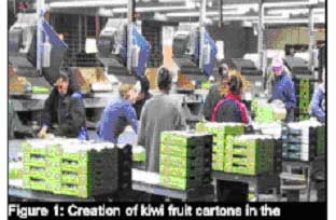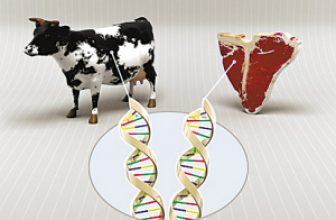
Application cases of RFID technology in the food industry
[ad_1]
Thailand’s fish industry uses RFID to track seafood
In order to distinguish a large number of shrimp products from different farms, an RFID application company in Thailand, IE Technology Company, has been studying how to implant RFID chips into the shrimp packaging used in fish farms and intermediate markets before distributing the shrimp to various processing points. In a plastic box, in order to understand the “ins and outs” of the shrimp.
This research aims to support the second phase of the food tracing program jointly carried out by the Thai Ministry of Agriculture and the Ministry of Science and Technology. This plan enables manufacturers, kitchen staff and even ordinary consumers to understand the origin and processing of food and ensure food safety.
IE General Manager Naiyavud Wongkomet said: “Shrimp is usually packed in boxes and transported from the fishery to the market, then mixed according to size, and finally packed into large containers. During the transportation process, people put the shrimps from one box to another. A box, and then put it elsewhere. Although the farm has installed an automatic system to store the shrimp data, the data will inevitably be confused during the processing process, making it impossible to determine which fishery the shrimp is in the box.”
In order to solve this problem, the company has studied the implantation of RFID chips in plastic boxes. This chip is implanted in every box used in fisheries, middle markets and processing plants to store all data related to shrimp, including the place of origin, species, illness records and the use of supplementary protein.
Naiyavud Wongkomet said: “Barcodes are afraid of water and can only be used within a certain temperature range. There are no such concerns when using RFID chips. More importantly, the speed of reading and transmitting data with RFID chips is unmatched by barcodes.”
Apiwat Thongprasert, consultant of the business development department of IE Technology, said: “It is not easy to implant RFID chips in plastic boxes, because before sealing the box with resin, the chip must be placed in one of the many holes. Sealing the box requires Use the right amount of resin, and at the same time, the data must be able to penetrate the seal. In order to make the RFID-implanted box can be widely used, we are considering implanting the chip during the box molding process, but this requires a wider range of cooperate.”
Apiwat said that the chip used in the food tracking program was developed by Silicon Process Technology, which was the first company in Thailand to design RFID chips. This kind of chip is 134.2 kHz, passive, low frequency, the advantage is that it is not afraid of water and low temperature, and it allows wireless reading of data. IE Technology has also developed an RFID reader that is not afraid of ice and water. In order to adapt it to the daily work of the shrimp market, the company designed two models that can be fixed and portable. The fixed reader can read the data in the chip implanted in the box, and the portable reader can double check the data in the chip to prevent any possible errors. Once the shrimps in the box are confused, the reader can scan the boxes one by one before copying the information until the last box is scanned. He said: “The reader cannot tell exactly which fishery the shrimps in the box belong to, but through the data from one box to another box, the producer can know exactly how many fishery the shrimps in each box come from. This helps. To shorten the tracking process.”
Since shrimp importers and exporters must submit a DS-2031 declaration form to the Ministry of Fisheries in order to obtain a license for this business, the relevant authorities plan to allow these importers and exporters to submit forms and receive licenses online. The identification number assigned to the company by the Bureau of Fisheries will be stored in the RFID chip implanted in the box. In this way, when tracking back, you can figure out the source of the shrimp in the box. In order to complete the tracking process of the boxes, FXA Group is developing software that can manage the flow of RFID information. FXA is a food industry software company that has developed web-based data tracking software that enables agricultural exporters to collect and track all information related to their product processing through electronic technology.
RFID will become a sharp sword to ensure food safety
Many developed countries attach great importance to food safety. In addition to establishing relevant legal systems, they also adopt high-tech methods to manage food safety. For example, Japan has established a “food ID system”, that is, a product history and tracking and monitoring system, requiring production and distribution departments to widely use barcode technology, radio frequency identification technology and other electronic tags to record the process of product production and circulation in detail. Various data.
In foreign countries, many farms have used RFID tags to monitor the basic conditions of poultry and animals (such as growth, health, circulation, etc.), thereby forming a complete industrial chain food safety control system. The principle is to use RFID + barcode technology. Throughout the entire food safety chain (pig breeding → breeding → slaughter → segmentation → small packaging → transportation → dining table), the entire process is strictly controlled in the industrial chain to ensure the provision of high-quality and assured meat to the market. Once there is a quality problem with the pork being sold, the information can be tracked and supervised in the whole process according to the label of the pork package.
The first application of RFID technology in the fresh food industry has also appeared in Australia. Moraitis is working with IBM to use an RFID tracking system. The RFID system will provide detailed information about the origin, packaging date, type, quality and size of the tomatoes shipped from Moraitis every day.
SYSCO, the largest food service marketing and distribution organization in North America, has completed the radio frequency (RFID) and sensor system testing of the cryogenic storage and transportation system. This test proves the ability of RFID to monitor temperature and environmental conditions during food transportation, which is a big step forward in ensuring food quality and safety.
In the UK, Trenstar and Scottish Courage Brewing demonstrated how to use RFID tags to better track wine barrels. Wine manufacturers can also use RFID tags with sensor technology to monitor temperature changes in the environment where wine barrels can affect the quality of wine products.
In terms of anti-counterfeiting, wine cannot be opened on the spot to check its authenticity, which provides opportunities for counterfeiters. In order to prevent the impact of counterfeit products, the manufacturer of Sassicaia is further considering adding RFID chips to the labels of wine bottles.
In my country, RFID technology has also been applied to food safety tracking management. For example: Zhejiang Fisheries Bureau, Hangzhou Technical Supervision Bureau, and the Organic Food Development Center of the State Environmental Protection Administration, this year also jointly launched the first fish product intelligent anti-counterfeiting card in the domestic aquaculture industry-Qiandao Lake “Chun Brand” organic fish ID card. The whole process of quality tracking management from the water body to the dining table is implemented.
[ad_2]





